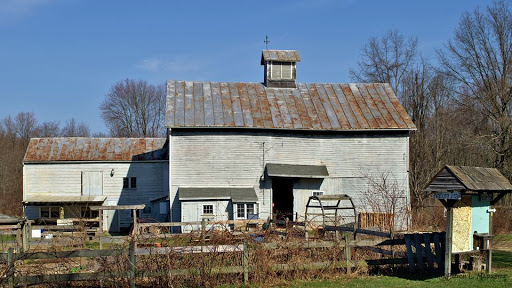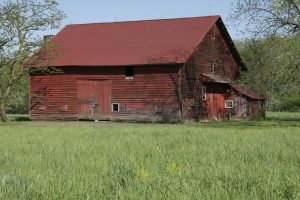
The restoration of old buildings is challenging, both financially and practically, but rehabbing an old barn sends a shiver down the staunchest of spines.
It’s a daunting task, yet several old barns in Gardiner are either in the process or planning stages of rehab. Their owners love  what an old barn stands for and want to extend its usefulness and preserve a piece of history. In our next issue, look for exciting interviews and photos featuring the barns at Phillies Bridge Farm (right), Willow Pond Sheep Farm and a privately owned barn near the Wallkill. These Gardiner barns have either already been rehabbed or are currently in the rehab process of being (ahem) barn again.
what an old barn stands for and want to extend its usefulness and preserve a piece of history. In our next issue, look for exciting interviews and photos featuring the barns at Phillies Bridge Farm (right), Willow Pond Sheep Farm and a privately owned barn near the Wallkill. These Gardiner barns have either already been rehabbed or are currently in the rehab process of being (ahem) barn again.
First, we’d like to offer some general resources.
Some barns of over 100 years old are still standing! How did they survive for so long? Timber frame buildings are built to last, which means that many historic timber-framed structures are still in use today. That said, when people think about rehabbing an old barn, the economics might not seem feasible. But people sometimes find that it would cost about the same to restore as to tear down and put up a modern structure.
To figure out the feasibility of the project, much knowledge is needed, but how many people are super knowledgeable about old barn construction nowadays? As with anything, if you do an internet search on “old barn rehab,” you’ll get plenty of info that can steer you in any number of directions, but more serious homework is recommended. 
The New York State Barn Coalition has done a great job of compiling a list of technical repair bulletins from the National Park Service and other resources. The list addresses specific needs of barns (i.e., paint, window, roof, and foundation repair). This is a great place for anyone trying to do barn repair work themselves, but also for anyone looking to learn more about what it takes to maintain historic buildings in general.
Another great resource, available from the Preservation Trust of Vermont, is a webpage “For Barn Owners,” with tips for basic barn care. There is also a Timber Framers Guild, whose members are “well versed in mortise and tenon construction,” and can make helpful recommendations.
For Gardiner barn owners looking to do a serious overhaul of their barn, and who want to preserve as many of the historic features as possible, it may be worth reviewing information on the Federal and State tax incentives for historic preservation. There is a tax credit available for rehabilitation expenses for historic barns. You are entitled to this credit if:
• you or your business has rehabilitation expenses for a barn that is a qualified rehabilitated building, and;
• the barn was originally designed and used for storing farm equipment or agricultural products or for housing livestock, and;
• the rehabilitation does not convert the barn to a residential purpose or materially alter the historic appearance of the barn.
There are a few further restrictions, so for additional information on claiming this credit, see: Form IT-212-ATT, Claim for Historic Barn Rehabilitation Credit and Employment Incentive Credit, and its instructions, Form IT-212-ATT-I.
Stay tuned for the next installment, when we visit the three Gardiner barn restorations pictured on this page.
